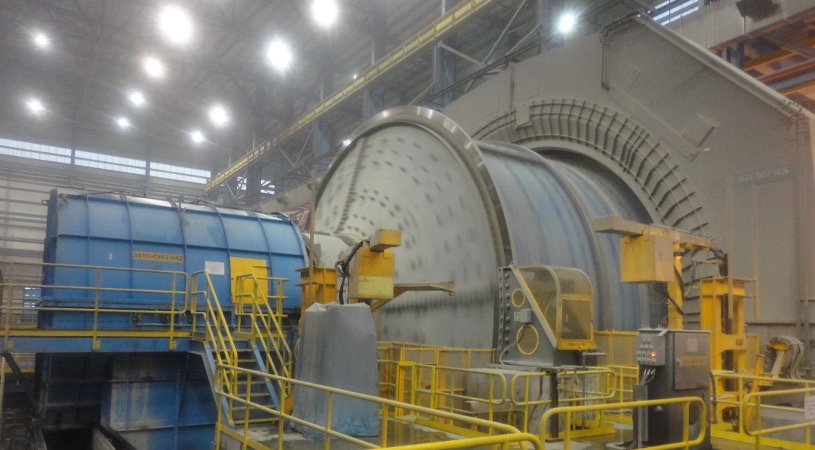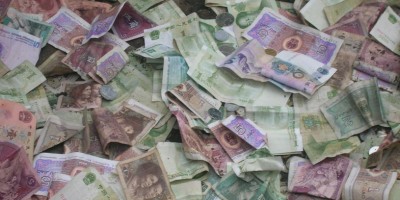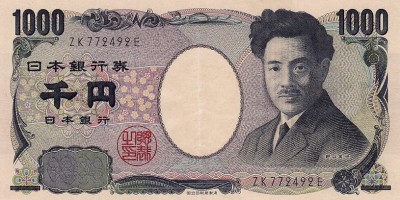The American baseball player Yogi Berra was known for his way with words, and one of his famous expressions came to mind this week: It’s deja vu all over again.
The reason was that the great Oyu Tolgoi (OT) debate experienced a revival after a lull of several weeks with President Elbegdorj making a statement before parliament that was highly critical of the management of OT and came at the same time the government demanded a meeting of shareholders with Rio Tinto to discuss outstanding administrative issues.1
These events coincided once again with opinion pieces in the international press regarding “resource nationalism” and the effects of Mongolia’s erratic mining policies on investment. I thought to myself, “Haven’t I heard this all before?”
It is important to take into account whenever discussing politics or policy that Mongolia is a multi-party democracy. Over the last decade political institutions in the form of governments, coalitions, or parties have been fragile and unable to fully span election cycles. Moreover, although the term “government” gives the impression that Mongolia has a monolithic institution of public administration, it has become more of a convenient rhetorical heuristic than a descriptive term. “Government” in the Mongolian sense has become a delicate balancing act of coalitions of political interests in parliament in order to reach the 39 seat threshold to form a government. This has resulted in a lack of continuity in policy and the appearance of fleeting institutional memory in the government. As someone who is rooting for any government to make good policy for Mongolia, I have been frustrated to watch each successive government’s inability to outline general policy principles that transcend election cycles. To make matters worse, an economy with a growing dependence on mining has introduced boom-bust commodities cycles as another complicating factor in the government’s ability to maintain policy positions. Each parliament has produced hastily written legislation to chase perceived get-rich-quick opportunities or to stave off financial crises and has found it difficult to establish forward looking legislation aimed at reducing the cyclical effects of elections and the world economy on policy. There are patterns and common threads from one cycle to the next, but a transient population of ex-pats on 2-3 year assignments and the relative inaccessibility and ephemeral nature of local information makes it all look very erratic and in want of easy explanations (e.g. resource nationalism vs. predatory foreign investors) to outside observers just tuning into the current cycle.
A thorough examination of each event and development over the last decade probably could fill a PhD dissertation, but I have tried to highlight the more significant points along the way that I think provide helpful context in understanding the current political situation.
2004-2006: The First Boom
It’s easy to forget that going into the 2004 parliamentary elections the ruling Mongolian People’s Revolutionary Party (MPRP) was the clear favorite to win the election. MPRP enjoyed a 72 seat majority in Mongolia’s 76 seat parliament and held the presidency. In spite of (or because of) its dominance in national government MPRP was only able to win 36 seats in the election. The opposition Democratic Party (DP) found itself politically relevant again after four years of being shut out of national policy making, and formed a coalition government under then party leader (and now President of Mongolia) Ts. Elbegdorj. MPRP declared widespread fraud in the election with little evidence to support the claim.2 In the 2005 presidential elections former Prime Minister N. Enkhbayar was elected to a four year term, allowing MPRP to retain the presidency. Mr. Elbegdorj’s government lasted less than two years when MPRP was able to entice 3 MPs to join their coalition and form a new government. That spring twenty-six opposition MPs walked out of parliament to protest government corruption and negotiations over the Oyu Tolgoi stability agreement.3

Pre-boom Sukhbaatar Square and Government Building
Meanwhile Canada based Ivanhoe Mines began touting the OT deposit to international financiers in order to raise capital to develop the then estimated USD 2 billion mine project.4 The company began work on a long term stability agreement with the government of Mongolia, but negotiations were complicated by a growing suspicion that Ivanhoe was negotiating too favorable terms for itself. In 2005 Ivanhoe Chairman Robert Friedland (a.k.a. Toxic Bob) “told an investor conference in Florida that developing part of Oyu Tolgoi was like making ‘T-shirts for five bucks and selling them for $100.'”5 This suspicion coupled with booming commodities prices on the world markets compelled parliament to hastily pass a new mining law in 2006, which among many provisions called for a 34 percent government ownership stake in any “strategic” mining deposit discovered with private financing and 51 percent government ownership stake in any “strategic” deposit discovered with government financing.6 Parliament also passed a 68 percent windfall profit tax for minerals sold above specific prices.7 Smelted copper was made exempt in the windfall profit tax law, and the reason given for this was to encourage investment in value added copper production within Mongolia.8 Many international observers began to cry foul and warned of dire investment consequences if the laws were not repealed.
2007-2009: The First Bust
MPRP won a clear majority of seats in the 2008 parliamentary elections, but opposition parties declared widespread fraud which culminated in a riot in which five people were killed and the MPRP headquarters were burned. Prime Minister S. Bayar soon after entered negotiations with opposition parties to form a grand coalition government in an attempt to ease tensions. During the election both major parties made promises of direct cash payouts of mineral wealth to citizens. DP initially promised MNT 1 million (USD 750) to each citizen, and MPRP countered with a promise of MNT 1.5 million (USD 1,100).

Oyu means turquoise, but investors see dollar green
The elections were hotly contested and emotions ran very high in part because negotiations with Ivanhoe Mines and its new strategic partner Rio Tinto had reached the point in which the next government was likely to have control over an unprecedented amount of national wealth. Negotiations began to break down in 2008 over Ivanhoe and Rio Tinto’s objections to the 2006 minerals law and other demands from the government. Initially the 34 percent ownership stake and windfall profit tax provisions were the major sticking points, but eventually the ownership stake provision was accepted as part of the general agreement outline. Throughout this period a dynamic emerged in which the Mongolian government would suggest ever favorable terms for itself which were met with loud protests and predictions of dire investment consequences from the other side only to have many of them accepted into the terms of the agreement. This dynamic prolonged the negotiations and started to make it appear like a deal would never happen.
In 2008 the international financial crisis began to take hold. By 2009 much of the credit in international equity markets had dried up, and Ivanhoe and Rio Tinto began to warn that if a deal was not reached soon they would have to pull the plug on the project. During the summer of 2009 the OT site diminished to a handful of contract workers and staff, and investment funds began to dwindle. Mongolia was then hit with the collapse of the cashmere market, and began facing a very severe economic situation in rural areas.9 In a last ditch effort to save the agreement, the coalition government worked to repeal the windfall profit tax and to revise other laws to clear the way for a final stability agreement.10 The long awaited agreement was signed in October 2009. In order to manage its stake in OT and the massive coal deposit Tavan Tolgoi, the government formed Erdenes Oyu Tolgoi (EOT) and Erdenes Tavan Tolgoi (ETT).11, 12
During this same period, Centerra, the only other major international mining investor in Mongolia at the time, was becoming the go-to example of mining investment with unfavorable terms to Mongolia over the development of the Boroo gold mine. In May 2009 the mine was temporarily shut down due to a labor dispute, and soon afterwards the government suspended its licenses due to “irregularities” found during a site inspection.13 The licenses were restored soon after, but some suggested the whole affair amounted to a political shakedown leveraging growing public anger over foreign control of mineral resources.
Ts. Elbegdorj was elected president in 2009 by defeating incumbent N. Enkhbayar on a platform of “hope” and “change” emulating US President Barack Obama’s successful election bid in 2008.
2010-2012: The Boom Returns
Investment money began pouring back into Mongolia, and attention quickly turned to the Tavan Tolgoi (TT) coal deposit. In 2011 US company Peabody Coal along with a Russia and a Chinese firm were selected by the government to help develop TT.14 This deal was soon scuttled by the government’s National Security Council, and the government began considering other options for the deposit. During the same year facing continued criticism for not making good on election promises and confronting budget difficulties, the government signed a USD 250 million pre-payment coal delivery deal with the Chinese aluminium company Chalco. Funds from the deal were slated to provide cash payouts to citizens in keeping with the election promises and to develop infrastructure on the site. In addition, the government sold 10 percent of the TT project in an initial public offering (IPO) to private firms in 2012.

Ulaanbaatar’s skyline changes in anticipation of office space demands
Rio Tinto’s agreement with Ivanhoe Mines to cap its ownership stake at 49 percent expired in 2011, and an attempt by Robert Friedland and the Ivanhoe board of directors to dilute the company’s shares to make a take over by Rio Tinto more expensive (i.e. more lucrative to the Ivanhoe chairman and board) was deemed invalid by an international arbitrator.15 Rio Tinto soon after purchased shares to become the majority holder of Ivanhoe Mines. In addition to OT, Ivanhoe Mines owned a coal mine called Ovoot Tolgoi operated by its subsidiary SouthGobi Sands. Rio Tinto’s aim in controlling Ivanhoe Mines was to develop the OT deposit, so it put SouthGobi Sands up for sale. Chalco put a bid on the company in the spring of 2012.
Leading up to the 2012 parliamentary elections calls for renegotiating the OT stability agreement began to gain steam, and negative sentiment towards foreign control of mineral resources began to increase once again. The SouthGobi Chalco deal came at a time of political maneuvering ahead of the elections, and parliament quickly drafted and passed an amended minerals law that established the requirement that investments in “strategically important” sectors over a certain threshold would require parliamentary approval. Most observers saw this as a shot over Chalco’s bow, and soon after Chalco dropped its bid for SouthGobi Sands. The reaction of the investment community was to once again to predict dire economic consequences as a result of the new law.
DP won a plurality of seats in the 2012 parliamentary elections, and soon afterwards formed a coalition government with a coalition party of former MPRP members and other minor parties. Prior to the election the MPRP changed its name to the Mongolian People’s Party (MPP), and former president N. Enkhbayar formed his own party using the old party name MPRP. He was barred from participating in the elections when he came under investigation on corruption charges. He eventually was sentenced to 4 years in prison. In a twist of the plot, MPP did not claim fraud in the elections but rather claimed an abuse of power by the government, courts, and election commission in nullifying the victories of two MPP candidates for alleged campaign law violations. MPP protested the decision by blocking access to parliament for several days to prevent the body from convening.
Calls to renegotiate the OT agreement amplified after the elections, and Deputy Speaker of Parliament S. Bayartsogt, who was the Minister of Finance when the agreement was signed, agreed to debate independent MP S. Ganbaatar on national television on the merits of the agreement. At the same time, the Prime Minister introduced a budget which included USD 300 million in revenue from “renegotiating” the OT deal to fill a yawning budget gap. Rio Tinto flatly refused to renegotiate its now USD 6 billion investment in OT, and tensions between the government and the company rose.
At the end of 2012, the government raised USD 1.5 billion in a bond offering intended to build infrastructure in the country.
2013: A Looming Bust?
News surfaced in early 2013 that ETT had run out of cash due to the Chalco deal signed in 2011 which put the Mongolian government in the position to selling coal from the mine for less than the cost of transporting it to the Chinese border.16 Some IPO investors from 2012 demanded refunds on their purchases because the Chalco issues forced the government to once again postpone a larger planned IPO.17 In spite of the glaring mismanagement of the TT deposit, political attention has remained focused on OT. The next presidential election is only a few months away, going after OT provides good political cover for the government to avoid talking about other pressing issues like the fact that ETT is hemorrhaging cash and not likely to be developed anytime soon.
A new cycle has begun, and there are some signs that 2013 may be a hard year for Mongolia. There is a large budget deficit due to depressed coal prices, much of the country is suffering through a severe winter that may kill millions of livestock by spring, and the revised minerals law passed in 2012 may have adverse effects on new investment–not to mention the risky game the government is playing in the international bond markets. If the economy falters, then the patterns would suggest a softening of tone towards OT if the mine going into full operation is seen as a way to generate quick cash and alleviate the crunch. If the economy continues on pace, then the patterns would suggest a strengthening of populist rhetoric leading into the presidential election and maybe continued revisions to the minerals law in an attempt to improve Mongolia’s position in exploiting its mineral wealth. Moreover, international observers will once again predict the end of investment in Mongolia’s mining sector.
Only time will tell, and maybe the current “Reform/Innovation” government will be able to out-do its predecessors and finally build a consensus around a more stable mining policy. What is certain is that whatever happens will feel like deja vu all over again.
Footnotes
1. For details see: B. Khash-Erdene, “Ts.Elbegdorj: Oyu Tolgoi should help Mongolia prosper, not leave it with a scar”, UB Post, http://ubpost.mongolnews.mn/?p=2780, February 4, 2013.
2. James Brooke, “A Cunning Opposition Turns Tables in Mongolia”, The New York Times, http://www.nytimes.com/2004/07/08/world/a-cunning-opposition-turns-tables-in-mongolia.html, July 8, 2004.
3. “World Briefing: Asia, Middle East, Africa and Americas – MONGOLIA: LAWMAKERS JOIN PROTESTS OVER MINE”, The New York Times, http://www.nytimes.com/2006/04/15/world/15briefs.html, April 15, 2006.
4. James Brooke, “Finding a Mother Lode in Mongolia”, The New York Times, http://www.nytimes.com/2004/10/14/business/worldbusiness/14mongolia.html, October 14, 2004.
5. Christopher Donville and Liezel Hill, “Ivanhoe CEO Loses in Rio ‘Chess Game’ Over Mongolia Mine”, Business Week, http://www.businessweek.com/news/2012-04-19/ivanhoe-ceo-loses-in-rio-chess-game-over-mongolia-mine, April 19, 2012.
6. “Minerals Law of Mongolia 2006 Official Translation”, M.A.D. Investments, http://www.mad-mongolia.com/wp-content/files_mf/minerallawsofmongolia.pdf, October 30, 2006.
7. “Smelted Copper Expected to be Exempt from Mongolia’s Windfall Profits Tax Law”, Turquoise Hill Resources, http://www.turquoisehill.com/i/pdf/2006-05-26_NR.pdf, May 26, 2006.
8. Ibid.
9. Jason Subler, “Layoffs in financial hubs such as London and New York are rippling deep into the grasslands of Mongolia, where herders are suffering as the price of cashmere, a wool used in luxury suits, has plunged”, http://www.reuters.com/article/2009/06/10/us-mongolia-poverty-idUSTRE55909320090610, June 9, 2009.
10. Tom Miles and Danielle Mario, “A giant leap for Mongolia, but where to?”, Reuters UK, http://uk.reuters.com/article/2009/08/27/mongolia-idUKLNE57Q00H20090827, August 27, 2009.
11. “About Us”, Oyu Tolgoi, http://ot.mn/en/about-us.
12. “‘Эрдэнэс-Таван толгой’ ХК”, Эрдэнэс-Таван толгой, http://www.erdenestt.mn/page/16/show.
13. Cameron French, “Centerra’s Boroo mine license restored, shares leap”, Reuters, http://www.reuters.com/article/2009/07/27/cbusiness-us-centerragold-mine-idCATRE56Q31220090727, July 27, 2009.
14. Fayen Wong, “Exclusive: Peabody, China and Russia teams chosen in mine bid”, Reuters, http://www.reuters.com/article/2011/07/04/us-mongolia-tavantolgoi-idUSTRE7630LZ20110704, July 4, 2011.
15. Sonali Paul, “Rio Tinto wins fight against Ivanhoe poison pill”, Reuters, http://www.reuters.com/article/2011/12/13/us-ivanhoe-rio-idUSTRE7BC0A420111213, December 13, 2011.
16. Michael Kohn & Yuriy Humber, “Mongolia’s Erdenes COO Hancock Said to Resign on Cash Crunch”, Bloomberg, http://www.bloomberg.com/news/2013-01-29/mongolia-s-erdenes-coo-hancock-said-to-resign-on-cash-crunch.html, January 29, 2013.
17. “Investors Demand Refund for Erdenes-TT Shares Purchased”, Business Council of Mongolia Newswire Issue 259, original source Unuudur.



